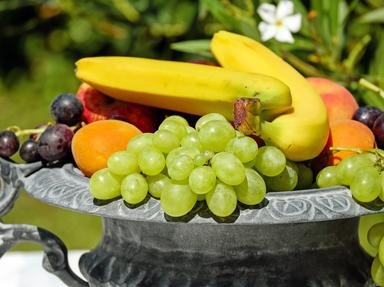Quiz Answer Key and Fun Facts
1. We'll start with a famous example of something that may or may not be a fruit: the tomato! Botanically speaking, is it a fruit?
2. I've got a lover-ly bunch of coconuts! They fell from a tree in Jamaica while the dancing girls swayed to and fro. Are they fruit?
3. "Be-bop-a-re-bop, a-rhubarb pie!" Garrison Keillor sang this song on his hit U.S. radio program, "A Prairie Home Companion". If I bake my rhubarb pie in New York State, USA, am I -legally- making it out of a fruit?
4. Just yesterday I was making ratatouille niçoise, also known as aubergine provençale according to "The Joy of Cooking". An important ingredient in this stew is aubergine, otherwise known as eggplant. How would you classify this purple food?
5. My ratatouille niçoise requires not only eggplant (aubergine) but also zucchini (courgette). How would we correctly classify the zucchini?
6. The last ingredient I'm adding to my ratatouille is green bell pepper. But wait, is this botanically speaking a fruit?
7. Now I'm making a simple East Asian stir-fry, with broccoli, wilted spinach, carrots, and snow peas. One of these items is botanically speaking, a fruit, even though all are culinary vegetables. Which is the botanical fruit?
8. I think I'll make a simple side salad with lettuce, celery, radishes, and cucumbers. Which of these ingredients is, botanically speaking, a fruit?
9. I might garnish my next creation with capers. Are capers classified as fruit, botanically speaking?
10. Strictly speaking, a TRUE fruit comes ONLY from the part of the flower which was an ovary, the fleshy part of the flower around the seeds. Using this very strict definition, which of these culinary fruits is the only true fruit?
Source: Author
gracious1
This quiz was reviewed by FunTrivia editor
WesleyCrusher before going online.
Any errors found in FunTrivia content are routinely corrected through our feedback system.

